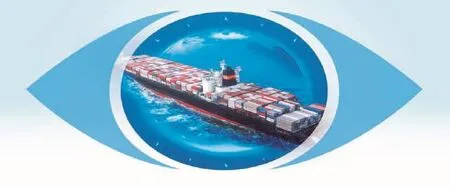What will be the fuel for future shipping industry?
2018-06-22ByShangJiafaLiuBitao
By Shang Jiafa & Liu Bitao

The new green energy sources, such as solar energy, wind energy and biofuel, have been used as alternative energy sources for traditional fossil fuels in energy, electricity and automobiles. Driven by the increasingly stringent rules and regulations of international maritime environmental protection, the shipping industry will also replace fuel and technology as an important measure to deal with environmental protection requirements. At present, LNG, LPG,methanol, biofuel, hydrogen, fuel cell, battery power and wind energy are the eight major alternative fuels and technologies that have been approved by the industry and are used in the shipbuilding industry.
For the shipping industry, the choice of alternative fuels and technologies in the future as a measure to deal with emission control is a key issue that must be taken against a rainy day. Therefore, we compare and analyze the advantages and disadvantages of eight kinds of alternative fuel and technology application from seven aspects: price, infrastructure, regulation,availability, environmental effect, technology maturity and economy.
In the short term, LNG, LPG and methanol are highly applicable to ships, and LNG is the most potential alternative fuel. The adjustment of the international energy market has brought sufficient fuel source and price advantage for the application of LNG. At the same time, the application of LNG power technology and the rapid development of infrastructure have laid the foundation for the application of LNG ship in the last few years. It is foreseeable that the development of the future power of the LNG will threaten the traditional fuel oil power. Although LPG and methanol have already realized the real ship application, the application scene is relatively limited, mainly concentrated in professional shipping (such as LPG, methanol transport ship) or offshore small ships, and the limitation of its availability and infrastructure development. Compared with LNG, the potential of LPG and methanol ship application is lower and the application scope is relatively limited.
In the long run, IMO has passed the greenhouse gas reduction target of reducing the total carbon dioxide emissions of the shipping block by 50% in 2050. In the future, more stringent specific emission reduction measures and requirements will be introduced. The carbon dioxide emission reduction ability of LNG,LPG and methanol is limited, and the feasibility of its ship application will be reduced, and with mature development of technology, the feasibility of application of biofuels, hydrogen fuel, battery power and fuel cell with good carbon dioxide emission reduction will be enhanced. Biofuels and hydrogen fuel can be used in existing fuel or LNG power systems, with fewer modifications to ships. Battery power and fuel cell will change the traditional mode of internal combustion engine, and promote the development of ship's full electric propulsion, which is conducive to the development of intelligent ship technology. However,battery capacity and life span are the biggest obstacles to battery power and fuel cell ship application, and the development and breakthroughs of technology are also needed.
